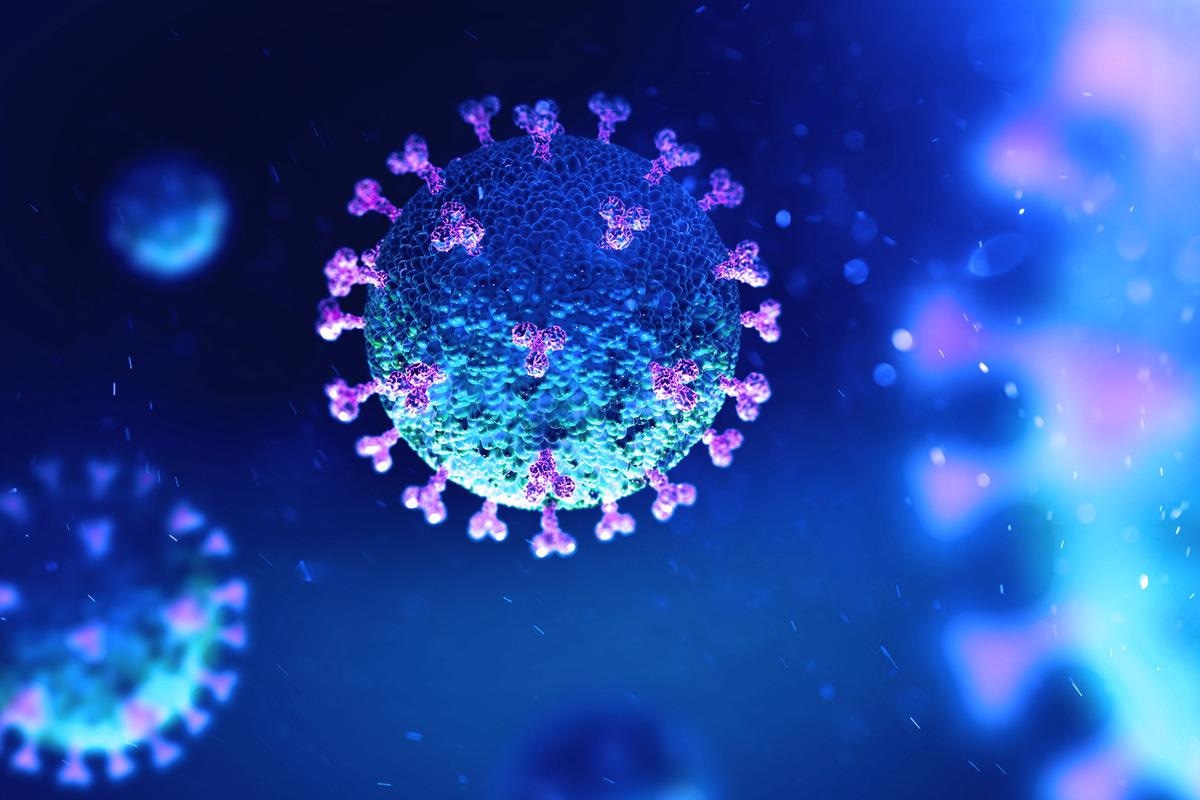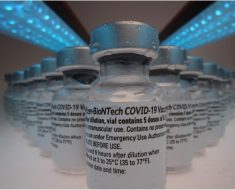A number of therapeutic approaches have been considered against the severe acute respiratory syndrome coronavirus 2 (SARS-CoV-2), which caused the coronavirus disease 2019 (COVID-19) pandemic.
A new preprint on the Preprints with The Lancet server describes a novel method, using a specific molecule to engage T cell receptors and the virus receptor, the angiotensin converting enzyme 2 (ACE2), at the same time. This could mitigate the impact of antibody-resistant strains of the virus.

Introduction
The virus uses its spike protein to bind to the host cell ACE2 receptor, thus mediating cell attachment and entry. Mutations in the spike have been reported that enhance binding to the receptor, while others lead to a loss of susceptibility to antibodies by altering the binding and/or neutralizing epitopes. Once infection has been established, the virus hijacks the cell machinery to synthesize its own proteins, leading to the expression of the viral spike protein on the cell membrane.
The aim of the current study was to evolve an approach that could target spike-bearing infected cells, thus stopping the propagation of the virus in the host. The challenge was to find a molecule that could bind to ACE2 via a site that can accommodate a number of current and potential future mutations.
Using synthetic biology, the researchers in this study engineered primary human CD8+ T cells that could bind to SARS-CoV-2-infected cells. These were adapted such that they expressed spike-specific chimeric antigen receptors that bore either ACE2 or anti-spike antibody. These were dubbed ACE2-CAR and anti-Spike CAR, respectively.
They also came up with a bispecific T cell engager antibody, a molecule that could bind to ACE2 as well as CD3. Called ACE2-Bite, this molecule could target both the virus as well as infected cells. They act by binding to the T cell CD3 by an anti-CD3 single-chain variable fragment (ScFv), and to the infected cell via the ACE2 peptide that attached to the spike protein.
In this way, the scientists hoped to link the engineered cytotoxic T cells to the infected cells via the bridging ACE2-Bite antibody. This will activate the T cells leading to apoptosis of the infected cell, similar to earlier cancer-fighting immunotherapy approaches.
Findings
The results of the study showed that with the use of T cells expressing ACE2-CAR and anti-spike CAR, SARS-CoV-2-spike-expressing cells were activated and selectively killed. The same result occurred when these cells were treated with ACE2-Bite, causing the activation of T cells when presented with spike-expressing host cells and cytotoxic destruction of the infected cells.
In a pseudovirus assay that used various coronavirus spikes, including those of SARS-CoV, SARS-CoV-2 (ancestral, Delta and Omicron), the ACE2-Bite antibody molecules bound to the pseudoviruses and neutralized their binding to ACE2 on the host cells. The antibodies showed higher affinity for Delta and Omicron. Thus, they acted successfully as decoys to attract the attention of cytotoxic T cells to the virus-infected host cells, causing the destruction of the latter, as well as preventing infection by neutralizing the viral particles.
Implications
The development of CAR-T cell immunotherapy is traditionally a cumbersome process with multiple steps, involving cell collection, engineering the required chimeric antigen receptors, and their infusion back into the patient. This was addressed using bispecific antibodies, here called Bites, to activate the T cells in the presence of the infected target cell.
These antibodies successfully redirected the T cells to the infected spike-expressing cells. Moreover, escape mutations that led to the emergence of antibody resistance are less likely to suppress neutralization with this approach, as they do not interfere with ACE2 binding. In fact, the researchers say, variants of the virus that have higher ACE2 binding as a result of mutations may be more vulnerable to ACE2-Bite, as shown here with the Delta and Omicron variants.
The scientists look ahead to the use of this approach to protect high-risk patients, such as very old or frail or immunocompromised individuals, from COVID-19. Further, the CAR-T cells can be adapted to avoid rejection by the recipient. In this way, this study may represent a proof-of-concept for the application of such techniques to current and future infections for which vaccines have not yet been developed.
On a more practical note, the use of Bites (bispecific T cell engager proteins) was found to result in T cell activation. This mirrors the use of a B cell surface protein (CD19) specific Bite called Blinatumomab (CD19-CD3 Bite) in B cell lymphoma patients, and other Bites in cancers and infections like cytomegalovirus and human immunodeficiency virus. If validated, this may present an approach to early treatment by neutralizing virus entry, and later treatment by limiting viral propagation through the cytotoxic destruction of the infected cells prior to virion assembly and release.
As mentioned above, this approach also prevents the emergence of resistant mutants by using the ACE2-binding site. This additionally acts as a virus decoy to neutralize the virus before it enters the cell, potentially adding immensely to the cytotoxic effect. Soluble ACE2 molecules have been used for therapeutic use previously, showing a steep resulting decline in the number of viral copies in the patient’s blood.
Further research will be required to rule out the occurrence of cytokine release syndrome or T cell exhaustion, known adverse effects of CAR-T therapy. Again, interactions between the ACE2 of the Bite and the physiological ACE2-binding sites could lead to disruption of normal homeostatic processes involving, for example, the renin-angiotensin system. This can, however, be overcome by appropriate engineering of the molecule.
According to the researchers,
In conclusion, engineered CD8 T cells expressing Spike protein-specific chimeric antigen receptors and ACE2/anti-CD3 bispecific T cell engagers could be used to target SARS-CoV-2 infected host cells and the virus itself, and may be alternative future therapeutic strategies for COVID-19.”
*Important notice
Preprints with The Lancet publish preliminary scientific reports that are not peer-reviewed and, therefore, should not be regarded as conclusive, guide clinical practice/health-related behavior, or treated as established information.
- Dogan, M. et al. (2022). Targeting SARS-CoV-2 Infection Through CAR-T Like Bispecific T Cell Engagers Incorporating ACE2. Preprints with The Lancet. doi: https://dx.doi.org/10.2139/ssrn.4087366. https://papers.ssrn.com/sol3/papers.cfm?abstract_id=4087366
Posted in: Medical Science News | Medical Research News | Disease/Infection News
Tags: ACE2, Angiotensin, Antibodies, Antibody, Antigen, Apoptosis, Assay, B Cell, Blood, Cancer, CD3, Cell, Cell Membrane, Coronavirus, Coronavirus Disease COVID-19, covid-19, Cytokine, Cytomegalovirus, Enzyme, Exhaustion, Immunodeficiency, Immunotherapy, Lymphoma, Membrane, Molecule, Omicron, Pandemic, Propagation, Protein, Pseudovirus, Receptor, Renin, Research, Respiratory, SARS, SARS-CoV-2, Severe Acute Respiratory, Severe Acute Respiratory Syndrome, Spike Protein, Syndrome, Virus

Written by
Dr. Liji Thomas
Dr. Liji Thomas is an OB-GYN, who graduated from the Government Medical College, University of Calicut, Kerala, in 2001. Liji practiced as a full-time consultant in obstetrics/gynecology in a private hospital for a few years following her graduation. She has counseled hundreds of patients facing issues from pregnancy-related problems and infertility, and has been in charge of over 2,000 deliveries, striving always to achieve a normal delivery rather than operative.
Source: Read Full Article





